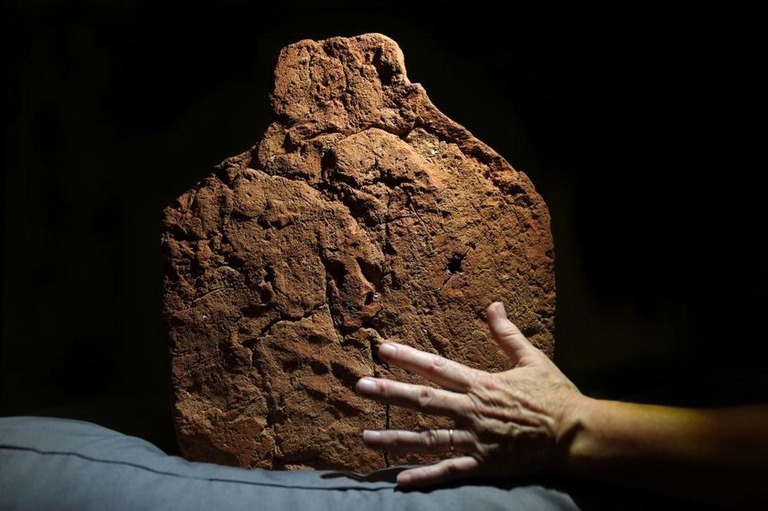イギリスの
ケンブリッジ大学の
博物館の
研究チームは、
古代エジプトの
墓から「
魂の
家」と
呼ばれる
土の
模型の
底に、
約4000
年前の
手形を
見つけました。
The research team at the Cambridge University Museum discovered traces of handprints about 4,000 years old on the underside of a clay model called a soul house found in an ancient Egyptian tomb.
は、
今年の
秋に
行われる
展示会の
準備中に
偶然見つかりました。
This discovery was made by chance while preparing for the exhibition to be held this autumn.
「
魂の
家」は、
亡くなった
人の
魂が
住む
場所として
作られた
建物の
形の
模型です。
The house of the soul is a model shaped like a building, created so that the souls of the deceased can have a place to reside.
の
前には、
パンやレタス、
牛の
頭などの
供え
物を
置く
場所が
有ります。
In front of the model, there is a place to put offerings such as bread, lettuce, and a cows head.
は、
紀元前2055
年から1650
年ごろに
作られたと
考えられています。
It is believed that this model was made between around 2055 BCE and 1650 BCE.
によると、
名前のわからない
陶工が
木の
棒で
建物の
形を
作り、
その上に
粘土を
塗って
模型を
作りました。
According to research, an unknown potter made models by shaping buildings with wooden sticks and then covering them with clay.
くときに
木は
燃えてなくなった
そうです。
When heated, the wooden stick burns away and disappears.
は、
粘土が
まだやわらかい
時に
陶工が
模型を
動かしたときに
付いたものだと
考えられています。
These are said to be handprints left by a potter when they moved the mold while the clay was still soft.
の
学者ストラドウィック
さんは、「エジプトの
作品で
こんなにきれいな
手形が
見つかるのは
初めてです。
Mr. Stradwick, a museum scholar, said, This is the first time Ive found such clear traces of a hand on an Egyptian artifact.
った
人の
姿が
目に
浮かびます」と
話しました。
I can imagine the person who made it.
エジプトでは、
陶器は
日用品や
飾りとして
よく使われていましたが、
作った
人のことは
あまり知られていませんでした。
In ancient Egypt, pottery was commonly used as everyday items and ornaments, but not much is known about the people who made them.
の
展示では、
当時の
職人たちにも
注目しています。
In this exhibition, we will also focus on the craftsmen of that time.
は
10月3
日から
始まります。
The exhibition will start on October 3rd.

